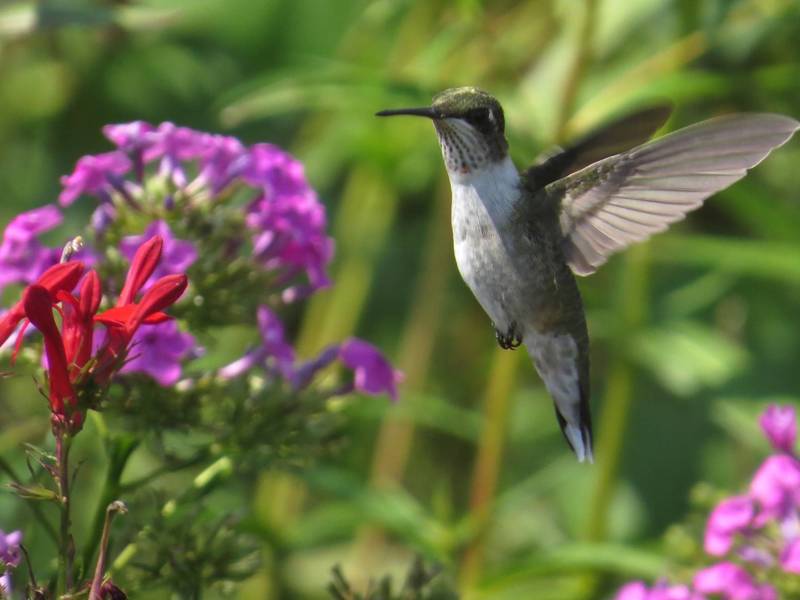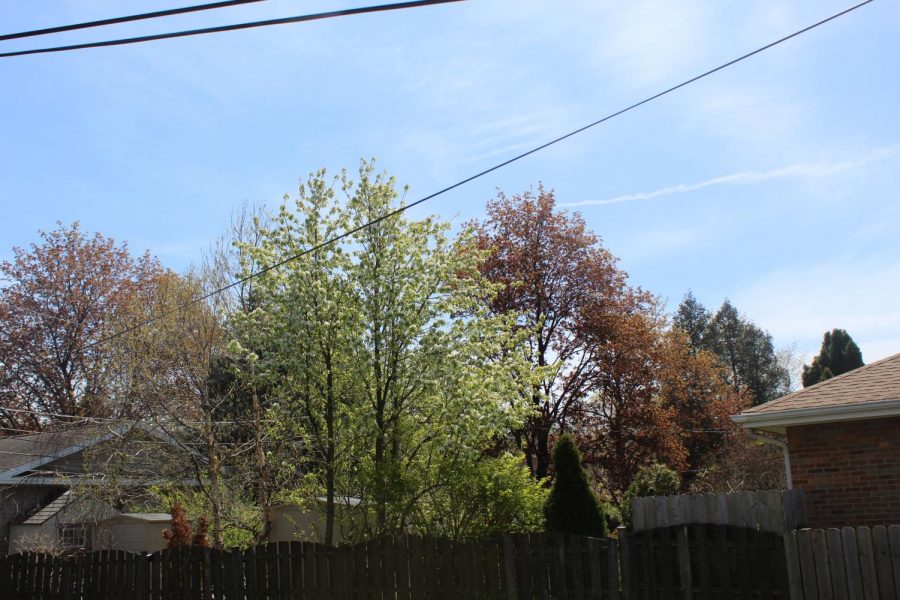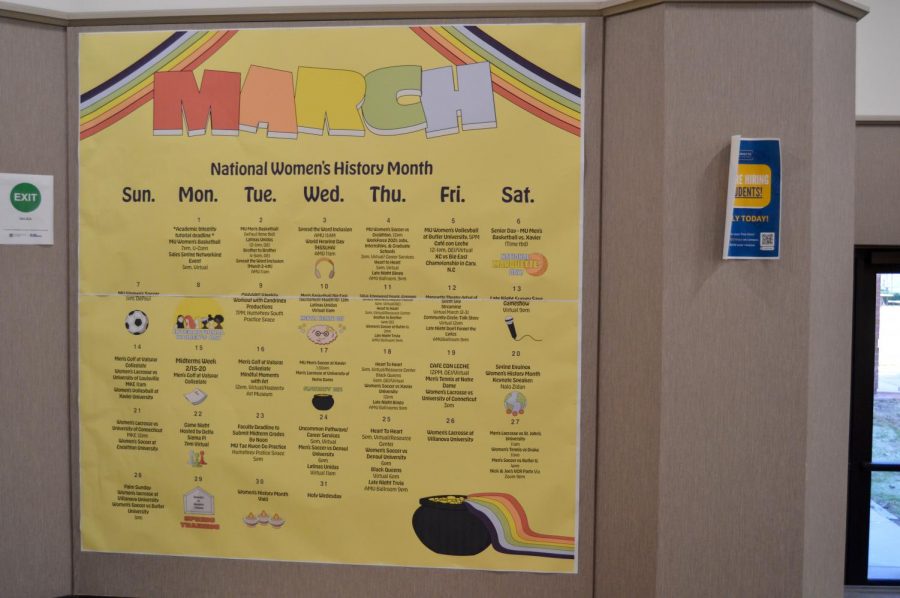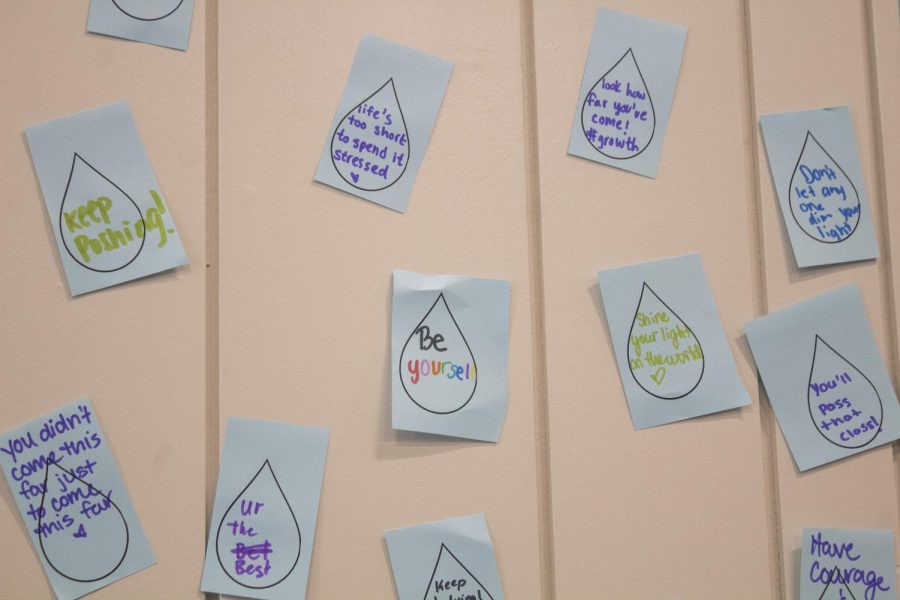Blink and you are sure to miss them.
The greenish, tiny blurs that whiz by at up to 30 mph, moving from wildflower to wildflower, feeding on nectar. When seen, they can look like butterflies attached to a tiny missile, or even a rather large bumblebee, but do not be mistaken: They are actually ruby-throated hummingbirds.
Soon, Milwaukee’s gray winter skies will part to the purest shade of blue. When tulips of every color outline sidewalks outside campus buildings and the sun shines down proud and bright onto the backpacked walkers of Wisconsin Avenue, springtime has sprung at Marquette University. And just as it all begins, the hummingbirds will arrive.
This summer, Milwaukee locals and tourists alike will once again have the chance of seeing these interesting birds that are no taller than the average index card, as they complete their annual migration from Mexico to Wisconsin and the surrounding midwestern and eastern states.
Tim Vargo, manager of research and community services at the Urban Ecology Center, explained that the ruby-throated hummingbird, the main species that migrates to this area, will start to arrive in the next couple of weeks.
“When the weather starts getting to that point where we are in mid-April is when we can start to see them. Usually the regular time to see them is in May,” Vargo said. “This (the ruby-throated hummingbird) is really the only regular hummingbird east of the [Rocky Mountains], so they are pretty easy to identify.”
Anna Schuster, a junior in the College of Health Sciences, grew up watching hummingbirds frequent the honeysuckles that were planted in her backyard and is excited to see more of the tiny creatures this spring in Milwaukee.
“I associate them with a lot of fond memories as a kid,” Schuster said. “My neighbors had a hummingbird feeder so they would get a lot of hummingbirds and it was always interesting when you heard a little buzz around your ear that wasn’t a bee.”
While hummingbird feeders are one way to catch a glimpse of these fast flying feathered friends, the Urban Ecology Center offers an excursion that brings the community into nature to experience bird and other forest animals in their natural habitat.
Each week, Vargo and other volunteers from each of the UEC’s three branches – Riverside Park, Menomonee Valley and Washington Park – lead birding walks. The walks take place from 8-10 a.m. on weekdays with a different branch holding the event each day.
Vargo said that the walks offer a good chance to learn about birding, connect the the community and maybe even see a hummingbird.
“[The walks are] a good place for beginners, and there’s usually a whole lot of regulars and people who know their birds that like to share their skills and knowledge with newcomers,” Vargo said. “Even if you’re really skilled they are open to you, and if you’re brand new, between the staff and the volunteers, there is always someone willing to help.”
B. Pladek, an associate professor of English at Marquette University, considers herself to be an amateur birder. Pladek said she has made many visits to UECs during her free time and has participated in some of the birding programming that they offer.
Pladek said that she didn’t know very much about hummingbirds, she has been able to spot them in nature while on birding walks.
“I’ve seen a couple (hummingbirds) zooming along the river path at the Riverside UEC. I was even lucky enough to see one settle in its tiny, tiny nest once,” Pladek said in an email. “[Birding] gives you a real opportunity to get to know parts of your environment you might otherwise pass by, and to see and hear that environment from a new perspective.”
Outside of the UEC, Vargo said that the best chance that students have to see a hummingbird is from the comfort of their own home or dorm.
With the wildflowers and tulips popping up across campus this spring, students might find that hummingbirds are closer than they think. Whether they are walking between classes, sitting outside the Alumni Memorial Union doing homework, or even sitting in the common area of their dorm, their chances of seeing a flash of green or hearing the whir of hummingbird wings is pretty high.
“The easiest thing to do is to set up hummingbird feeders in your yard, but other than that, really no matter where you are, it’s kind of luck of the draw,” Vargo said. “And they’re kind of fun that way; you aren’t really able to see them regularly unless they have a food source that you put out for them and hope they find.”
Schuster said that she is looking forward to spending more time outdoors this spring and is planning on taking a trip to the UEC.
“I work at a senior living facility and the residents there are always pushing me to go to the Urban Ecology Center,” she said. “I know they do great things for educating people on our environment so I would love to visit.”
This story was written by Kim Cook. She can be reached at [email protected].






